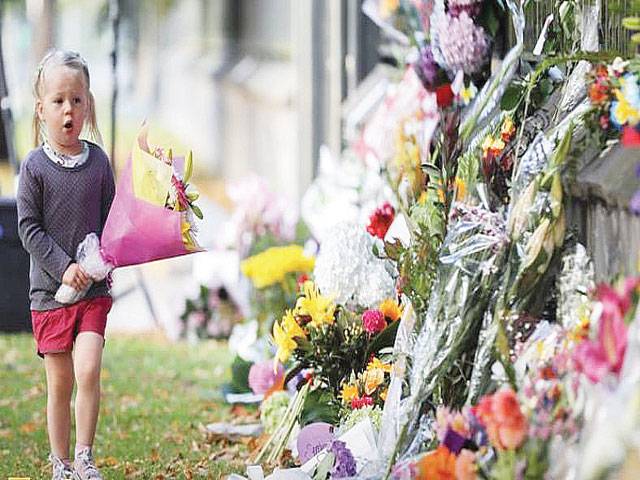CHRISTCHURCH - Anguished relatives anxiously waited Sunday for authorities to release the remains of those who were killed in massacres at two mosques in the New Zealand city of Christchurch, while police announced the death toll from the racist attacks had risen to 50.
Islamic law calls for bodies to be cleansed and buried as soon as possible after death, usually within 24 hours. But two days after the worst terrorist attack in the country’s modern history, relatives remained unsure when they would be able to bury their loved ones.
Police Commissioner Mike Bush said police were working with pathologists and coroners to release the bodies as soon as they could.
“We have to be absolutely clear on the cause of death and confirm their identity before that can happen,” he said. “But we are so aware of the cultural and religious needs. So we are doing that as quickly and as sensitively as possible.”
Prime Minister Jacinda Ardern said a small number of bodies would start being released to families Sunday evening, and authorities hoped to release all the bodies by Wednesday. But by the end of Sunday night, it was not clear whether any bodies had been released.
34 injured victims remained at hospital; officials say 12 were in critical condition
Police said they had released a preliminary list of the victims to families, which has helped give closure to some relatives who were waiting for any news.
Witnesses inside the Masjid Al Noor mosque in Christchurch describe the horrific scene when a gunman opened fire during Friday afternoon prayers. One said there was 10 to 15 minutes of continuous shooting, “He just shot all the people.” (March 15)
The scale of the tragedy and the task still ahead became clear as supporters arrived from across the country to help with the burial rituals in Christchurch and authorities sent in backhoes to dig new graves in a Muslim burial area that was newly fenced off and blocked from view with white netting.
The suspect in the shootings, 28-year-old white supremacist Brenton Harrison Tarrant, appeared in court Saturday amid strict security, shackled and wearing all-white prison garb, and showed no emotion when the judge read him one murder charge and said more would likely follow.
Tarrant had posted a jumbled 74-page anti-immigrant manifesto online before the attacks and apparently used a helmet-mounted camera to broadcast live video of the slaughter.
Ardern said the gunman had sent the manifesto to her office email about nine minutes before the attacks, although she hadn’t gotten the email directly herself. She said her office was one of about 30 recipients and had forwarded the email to parliamentary security within a couple of minutes of receiving it.
Bush said at a news conference Sunday that they found another body at Al Noor mosque as they finished removing the victims, bringing the number of people killed there to 42. Another seven people were killed at Linwood mosque and one more person died later at Christchurch Hospital.
Thirty-four injured victims remained at Christchurch Hospital, where officials said 12 were in critical condition. And a 4-year-old girl at a children’s hospital in Auckland was also listed as critical.
Dozens of Muslim supporters gathered at a center set up for victims, families and friends across the road from the hospital, where many had flown in from around New Zealand to offer support. About two dozen men received instructions on their duties Sunday morning, which included Muslim burial customs.
“As soon as people die we must bury them as soon as possible,” Hakim said. “We are all here to help them in washing the body, putting them in the grave.”
Javed Dadabhai, who flew from Auckland after learning about the death of his 35-year-old cousin, Junaid Mortara, said the Muslim community was being patient.
“The family understands that it’s a crime scene. It’s going to be a criminal charge against the guy who’s done this, so they need to be pretty thorough,” he said.
Still, it was hard, he said, because the grieving process wouldn’t really begin until he could bury his cousin.
People across New Zealand were still trying to come to terms with the massacre that Ardern described as “one of New Zealand’s darkest days.”






